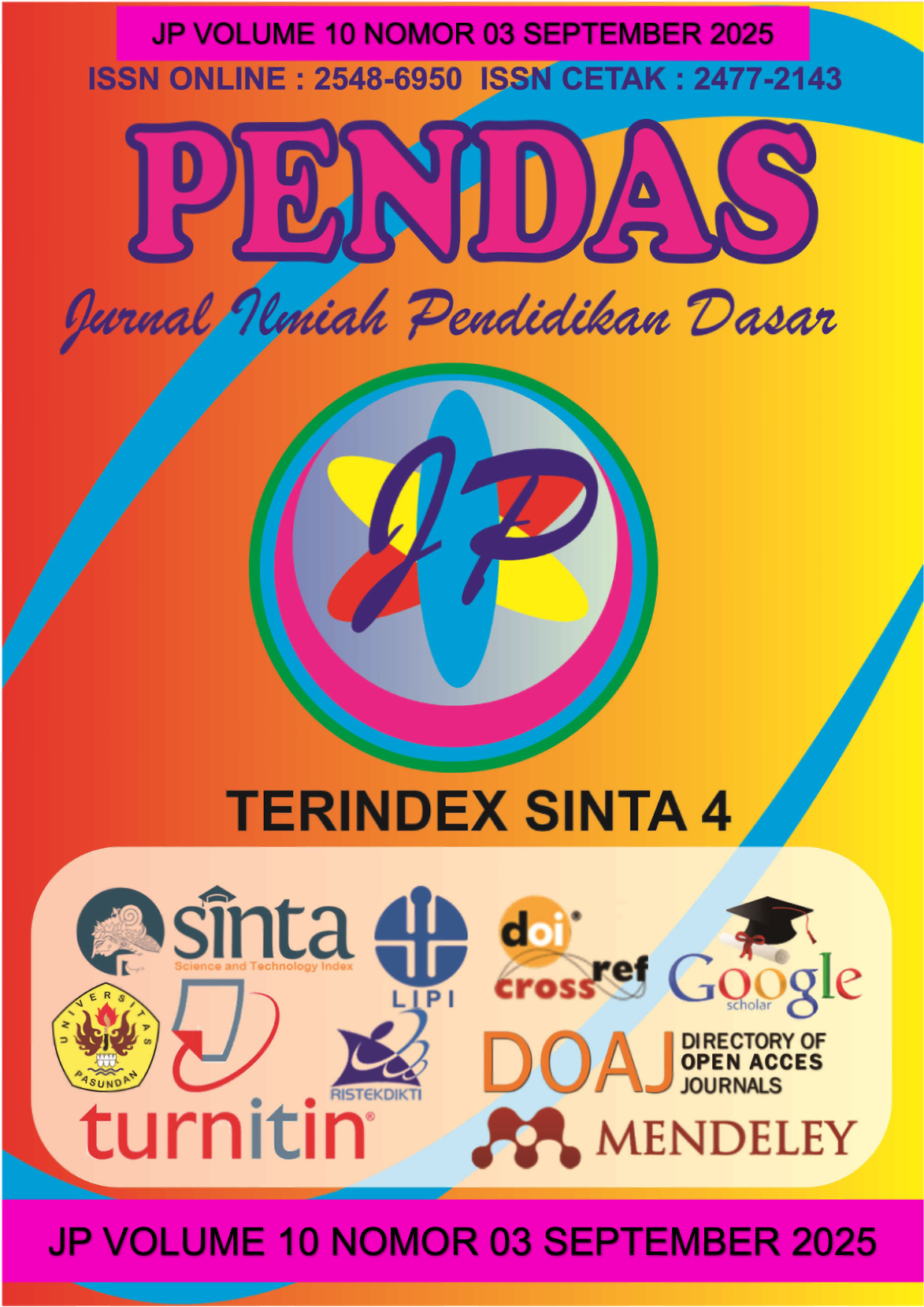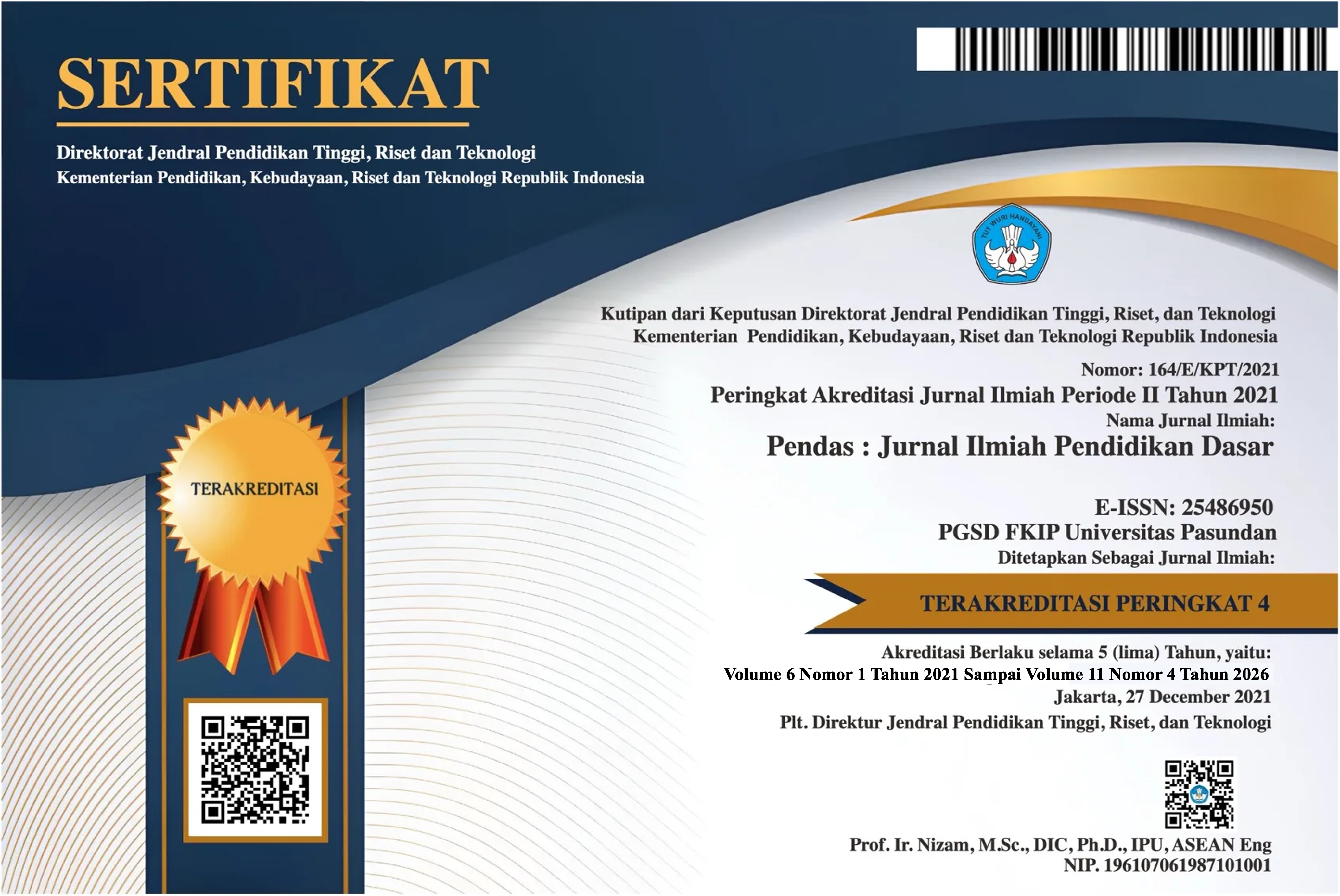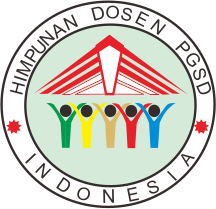PEMODELAN SPASIAL PREDIKSI LONGSOR DI KECAMATAN MALALAK DAN KECAMATAN IV KOTO, KABUPATEN AGAM DENGAN MACHINE LEARNING RANDOM FOREST
DOI:
https://doi.org/10.23969/jp.v10i03.31022Keywords:
Flash Flood Hazard, Linear Fuzzy, Identification, Infrastructure and Land Use, Flash Flood AffectedAbstract
The objectives of this study are: 1) Spatial modeling of landslide prediction, 2) Analysis of factors that contribute most to landslide occurrence, and 3) Landslide prediction model as a basis for landslide disaster mitigation planning. This study uses a multivariate statistical approach with random forest machine learning, and model validation is performed by calculating the Area Under Curve (AUC) value using the R language. The variables analyzed in this study include landslide locations, slope direction, slope curvature, slope inclination, elevation, rainfall, land cover, geology, soil type, landform, distance from roads, distance from rivers, and vegetation index. The results of the study found 57 landslide locations spread across the study area. The resulting machine learning random forest produced a landslide hazard prediction map with an AUC value of 0.9062, classified into five hazard level categories based on probability values: very low with an area of 5,240.98 hectares (27.64%), low with an area of 4,468.25 hectares (23.56%), moderate with an area of 4,336.05 hectares (22.86%), high with an area of 3,048.19 hectares (16.07%), and very high with an area of 1,870.42 hectares (9.86%). The largest contributing factors to landslides were slope gradient, rainfall, and distance from roads. Mitigation strategies based on the primary contributing factors to landslides include the construction of retaining walls, soil retention structures, drainage improvements, revegetation of slopes with strong root systems, and regular monitoring.
Downloads
References
Ahyuni, Hidayat, R. A., Purwaningsih, E., & Suasti, Y. (2023). Random Forest Method Utilization For Landslide Hazard Zonation In Lima Puluh Kota Regency. ICGEO 2022: Proceedings of the 2nd International Conference of Geography, ICGEO 2022, 19-20 November 2022, Padang, West Sumatera, Indonesia, 130.
Ardes, W., Mizwar, Z., & Rahmat Putra, R. (2024). Faktor Penyebab Tanah Longsor Pada Wilayah Kabupaten Sijunjung. Sigma Teknika, 7(2), 428–438. https://doi.org/10.33373/sigmateknika.v7i2.6799
Ayunimas, A., Haryati, N., Sonata, H., & Muchlian, M. (2023). Karakteristik Tanah Pada Lereng Sebagai Mitigasi Pasca Bencana Tanah Longsor (Studi Kasus: Nagari Aie Dingin, Kab. Solok, Sumatera Barat). Jurnal Bangunan, Konstruksi & Desain, 1(3), 159–167. https://doi.org/10.25077/jbkd.1.3.159-167.2023
Dahim, M., Alqadhi, S., & Mallick, J. (2023). Enhancing landslide management with hyper-tuned machine learning and deep learning models: Predicting susceptibility and analyzing sensitivity and uncertainty. Frontiers in Ecology and Evolution, 11(March), 1–22. https://doi.org/10.3389/fevo.2023.1108924
Faadhilah, A., & Nugroho, H. (2024). Pemetaan Daerah Rawan Longsor di Kabupaten Bandung Barat menggunakan Metode Machine Learning dengan Teknik SVM. Jurnal Teknologi Ramah Lingkungan, 8(2), 185–199. https://doi.org/10.26760/jrh.v8i2.185-199
Hidayat, R., Wijaya, I. P. E. P., & Munir, M. D. (2023). Mekanisme Longsor Akibat Infiltrasi Dari Genangan Air (Studi Kasus Longsor Di Lahat, Sumatera Selatan). Jurnal Teknik Hidraulik, 14(1), 1–12. https://doi.org/10.32679/jth.v14i1.701
Martin, D., & Chai, S. S. (2022). A Study on Performance Comparisons between KNN, Random Forest and XGBoost in Prediction of Landslide Susceptibility in Kota Kinabalu, Malaysia. 2022 IEEE 13th Control and System Graduate Research Colloquium (ICSGRC), 159–164. https://doi.org/10.1109/ICSGRC55096.2022.9845146
Nofrizal, N., & Zarinda, S. (2022). Studi Ekperimental Respon Intensitas Hujan Dan Tekanan Air Pori Tanah Pengaruhnya Terhadap Keruntuhan Lereng. Ensiklopedia of Journal, 4(2), 296–302. https://doi.org/10.33559/eoj.v4i2.1067
Nugroho, B. W., Rojudin, D., Harist, M. C., & Affandi, H. A. (2022). Zonasi Rawan Gerakan Massa Berbasis GIS dan Integrasi Aplikasi Manajemen Bencana Berbasis Crowdsourcing di Area Pertambangan Emas Pongkor, Jawa Barat. Indonesian Mining Professionals Journal, 4(2), 49–62. https://doi.org/10.36986/impj.v4i2.72
Phuyal, B., Thapa, P. B., & Devkota, K. C. (2022). Characterization of large-scale landslides and their susceptibility evaluation in central Nepal Himalaya. Journal of Nepal Geological Society, 63, 109–122. https://doi.org/10.3126/jngs.v63i01.50846
Ramadhani, K., & Triyatno, T. (2025). Analisis Tingkat Bahaya Longsor pada Ruas Jalan Sicincin-Malalak-Balingka dan Ruas Jalan Padang Lua-Maninjau di Kecamatan IV Koto Kabupaten Agam. Tsaqofah, 5(3), 1845–1871. https://doi.org/10.58578/tsaqofah.v5i3.5420
Roihan, A. (2025). Analisis Kerawanan Longsor Menggunakan metode CMA di Kabupaten Tana Toraja. Jurnal Sains Geografi, 3(1), 1–12. https://doi.org/10.21009/jsg.v3i1.01
Syaidah, Y., & Ahyuni. (2024). PEMETAAN KAWASAN BAHAYA BENCANA LONGSOR DI KABUPATEN SOLOK MENGGUNAKAN METODE RANDOM FOREST. 4.
Umbara, R. P., Melati, D. N., Astisiasari, Wisyanto, Trisnafiah, S., Trinugroho, Arifianti, Y., Prawiradisastra, F., Ramdhani, T. I., Arifin, S., & Anggreainy, M. S. (2024). Utilization of Frequency Ratio and Logistic Regression Model for Landslide Susceptibility Mapping in Bogor Area. International Journal on Advanced Science, Engineering and Information Technology, 14(2), 528–539. https://doi.org/10.18517/ijaseit.14.2.19345
Wibawanti, E., Sartohadi, J., Ngadisih, N., Setiawan, A., & Mardiatno, D. (2023). Keefektifan “ProKlim” dalam Pengendalian Longsor Secara Vegetatif di Kampung Iklim Desa Sambak, Kajoran, Magelang. AgriTECH, 43(2), 105. https://doi.org/10.22146/agritech.72009
Wilopo, W., Putra, D. P. E., Fathani, T. F., Pramaditya, A., Tandirerung, R., & Erzagian, E. (2023). Comparison of two landslide hazard zonation methods in the volcanic terrain of Temanggung Regency, Central Java, Indonesia. Journal of Degraded and Mining Lands Management, 10(3), 4537–4546. https://doi.org/10.15243/jdmlm.2023.103.4537
Downloads
Published
Issue
Section
License
Copyright (c) 2025 Pendas : Jurnal Ilmiah Pendidikan Dasar

This work is licensed under a Creative Commons Attribution 4.0 International License.



















